📚 Daily inspection N4👉🏻N2 one-time qualified preparation method (below)
Hello everyone~ Continuing the learning process and the "reverse learning method" shared in the previous part , the content of <Part II> will focus on the reference books and online resources I used in the preparation process of writing style, vocabulary, reading and listening. I hope it will help you prepare for the daily inspection more efficiently!
❗ The books introduced below are the books that I started to use when my level fell to N3 . You can choose the reference books that suit your level, and refer to my usage method. The part of online resources is applicable no matter which level of daily inspection is prepared.
📝 Grammar
Books to use:New Daily Check Out Strategy N2, 3: Grammar
Online resources: Japanese language teachers , Japanese for export
Learning process:
- Read the genre content assigned by the grammar book
- Watch the introduction to this style in Japanese for export (if there is no related video, please refer to the blog content of Japanese teachers or other teachers)
- Consolidate the content of grammar books and online resources in notes
For example, today the grammar book assigned me to study the first style of writing as ものなら, so I would first read the key points and example sentences mentioned in the book.
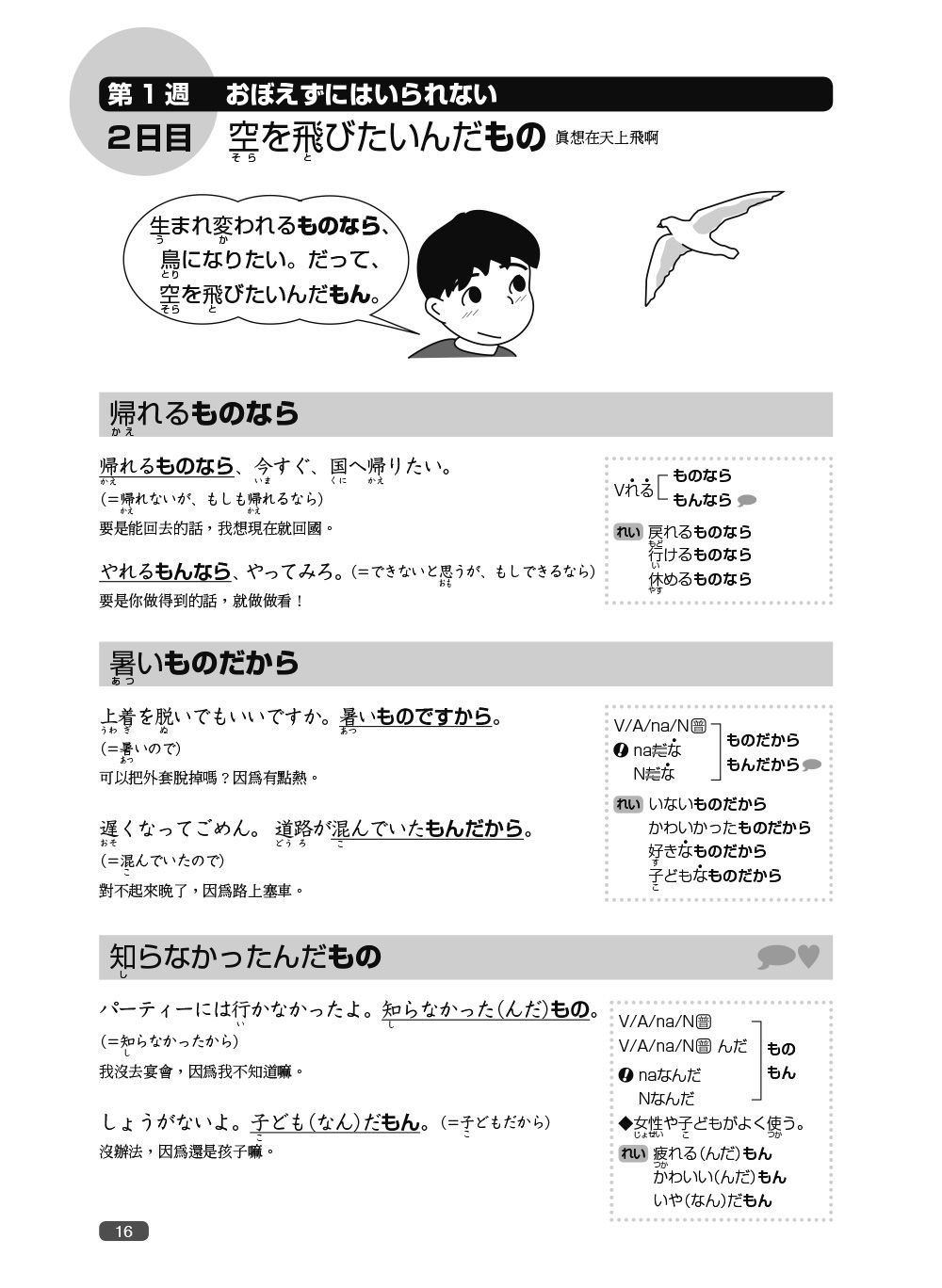
After I have a preliminary understanding of the style, I will go to google to search for the usage of ものなら, and then check whether Teacher Kou has made a video of this style. Teacher Kou is very detailed in explaining the continuation rules of the style. If there is any similar to this style or The places that are easy to be confused will also be specially supplemented, which is a very good teaching material.
*N4~N5 grammar explanations are in Chinese, N3 and above are full Japanese explanations

If Mr. Exit did not make related teaching videos, I would refer to the blogs written by other Japanese teachers. Among them, I most often refer to the Japanese teachers of 曎日のんびり.
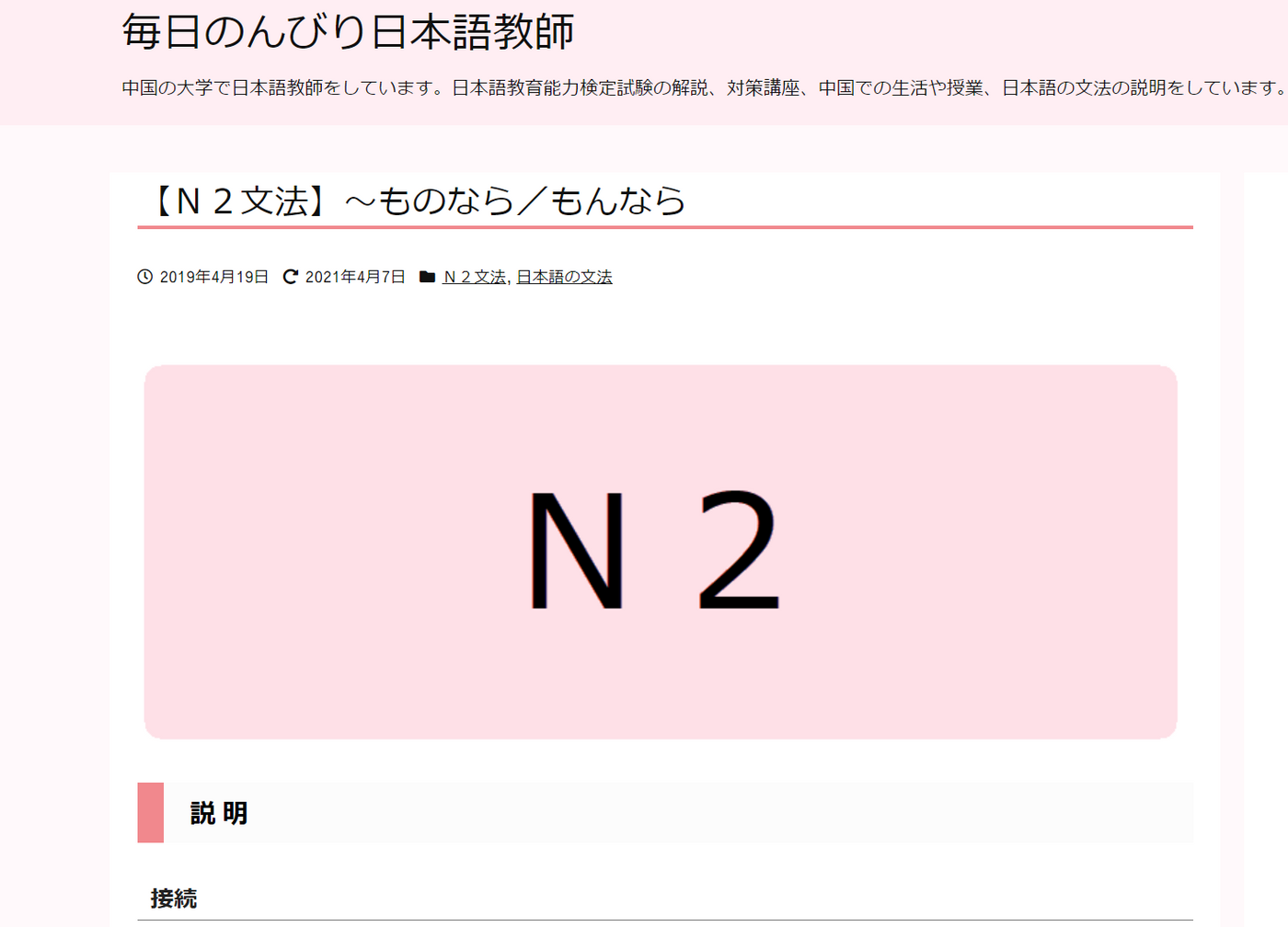
⭐Every day no ん び りThe author of the Japanese language teacher is a Japanese teacher who teaches in a Chinese university. His blog covers the genres ranging from N5 to beyond N1 (N0). Simplified translation is attached, although it is not very detailed. The example sentences provided are very diverse and very close to daily life, which is my first choice for referring to Japanese teaching blogs.
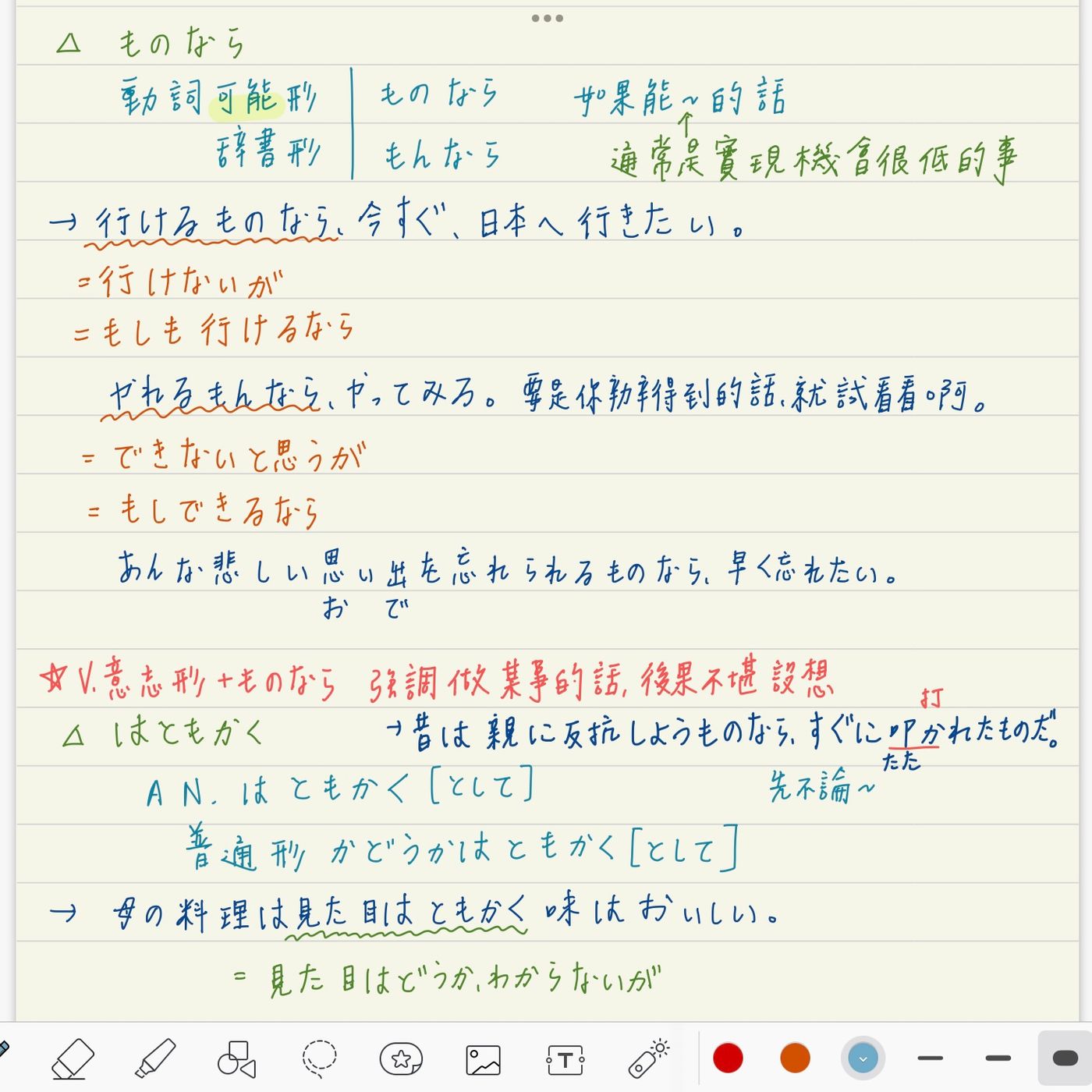
How to copy the notes varies from person to person. I used GoodNotes to take notes on the iPad. The notes of each type can be integrated through the outline function. I think it is more convenient for future review than hand-written notes.
💬 Slang
Books to be used: New Daily Check-up Monolingual N3, N2 ,New Daily Check-up Perfect Strategy N2: Kanji・Vocabulary
Online resources: MOJi dictionary (also has an app), weblio
Words are the most important basis for learning each language. Take building a house as an example. Words are like the foundation of a building, and the beams and columns above are composed of beams and columns of various styles. The decoration of the building’s appearance is reading, Speaking and listening skills. With the increase in the number of characters (expansion of the foundation), the layout of this building called "Japanese Language Ability" will also expand!

There are roughly two types of single-character books on the market. One is a single-character book that lists each character in the order of the fifty syllables, and the other is a single-character book that is classified by themes. I am accustomed to memorizing words according to the theme. In addition to the more coherent memory between words, there is less confusion. And Zhongwen published the new daily inspection to win the monolingual use of the latter.
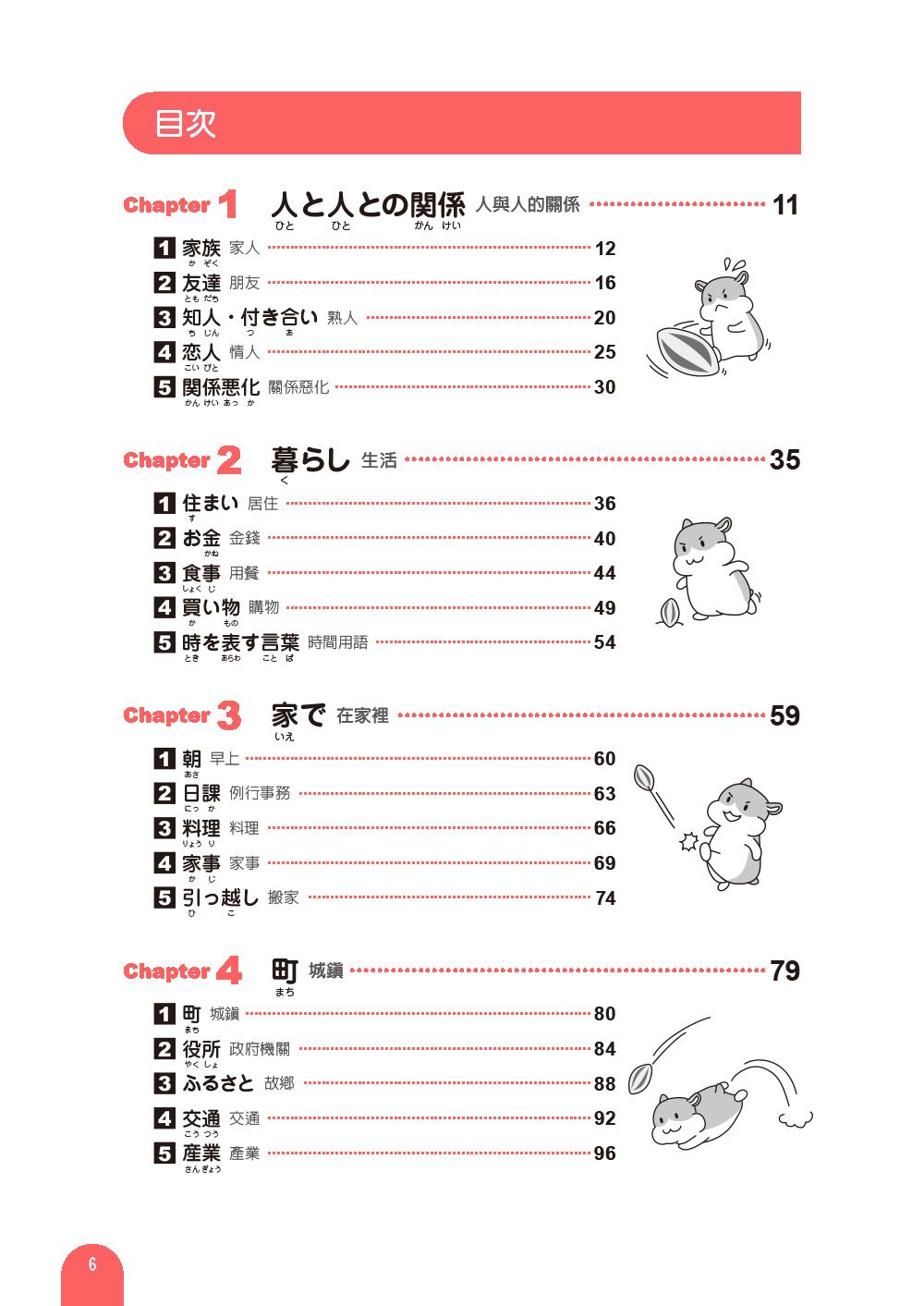
Here's how I use this one-word book.

Since Japanese often have the same kana but read with different accents, it is strongly recommended that you read a word with a sound file when you read it for the first time! And mark the temperament of this word (②). This one-word book has a free app, which has the functions of reading one-word example sentences and simulating vocabulary test questions. You must make good use of it!
When reading a word, I will play the pronunciation of the word first, then repeat it once, then press pause and cover the example sentence next to the word, and then continue playing.
After reading the example sentence, I will try to read the exact same sentence by memory, and scrutinize the meaning. This method sounds laborious, but it can help us memorize the words faster! You can also practice listening. While scrutinizing the meaning of the example sentences, we may find that there are words we don't understand (①) in the example sentences. At this time, I will stop and use the MOJi dictionary to look up its meaning and mark it aside.
Sometimes when I come across some (I think) difficult-to-remember words, I will look up the dictionary to find more example sentences (③). Memorizing words through example sentences can help our brains to better connect.
📙Reading, 👂🏻Listening
Using Books: Archaeology Questions
Online resources: NHK News Web EASY , Fu Niang's Fairy Tale Collection , Japanese Novel Translation Room , Qingkong Langyu
The preparation of reading and listening, I think the preparation methods complement each other! Next, I will introduce to you one by one~
- archaeology
About two months before the N2 test, I started to practice archaeology questions once a week.
Compared with the simulated test questions of different difficulty on the market, the archaeological questions will be a better reference before the official test. Moreover, the daily inspection is different from the general entrance examination, and the test questions may be repeated . Therefore, the strategy I adopted at the beginning was to practice more archaeological questions and revise each test question solidly.
Regarding the sources of previous exam questions, the JLPT official has a set of exam questions, but there is no detailed explanation (with listening audio files and transcripts). Some channels such as Shrimp x also sell test booklets, most of which are accompanied by detailed explanations in simplified Chinese. There are also many videos on the Internet. However, due to copyright concerns, I will not attach the link here. You can decide for yourself. Shop here.
Taking listening as an example, when doing mock exams, there are often cases where you don't understand some parts but still get the answer right. At this time, I will refer to the text and listen to the audio file in reverse. In addition to another listening practice, this correction process can sometimes help us clarify the correct pronunciation of words that we mistakenly thought were correct in the past, but were actually wrong!
- NHK News Web EASY
NHK provides a wealth of learning resources for those who are learning Japanese at all stages. The entry point is to learn Japanese through やさしい (approachable) news NHK News Web EASY .

As shown in the picture above, in addition to the audio file (pronounced slowly), each news content will also have a pseudonym attached to each Chinese character. You can also set and read the version with the pseudonym deleted.
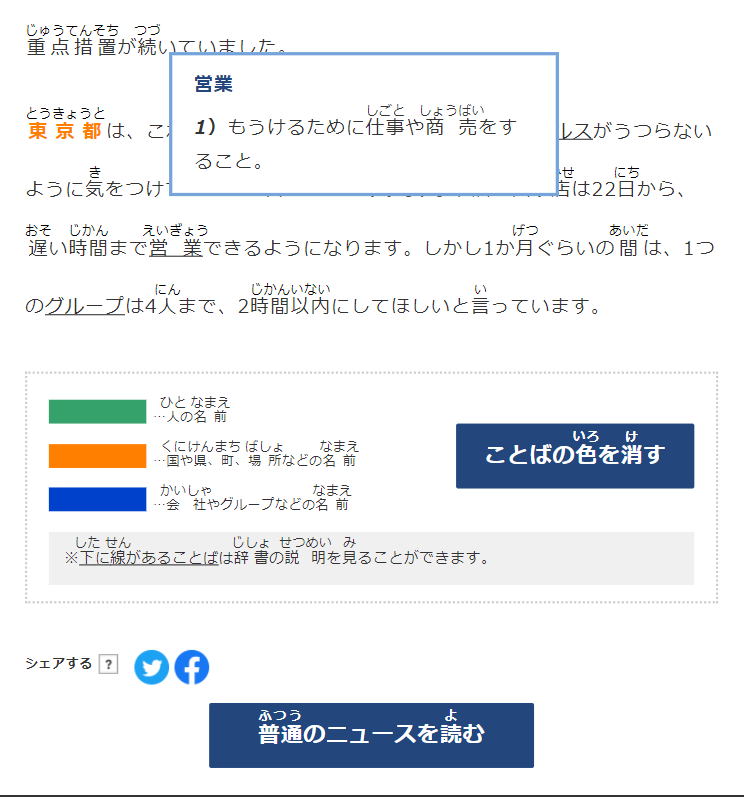
In addition, you can also click on some words to see the explanation of the word. If you are a more advanced student, you can click on ordinary のニュースを読むto read the unsimplified news.
Of course, NHK news is updated at any time, and the update frequency of NHK News Web EASY is about 3 to 4 articles on weekdays.
In addition to assisting study, reading news can also help us understand the current situation in Japan and the issues that the country is paying attention to. NHK News is a site that I regularly browse every day so far! I highly recommend that you take a look at it when you have time.
- Fu Niang's Fairy Tale Collection, Qingkong Long Reading, Japanese Novel Translation Room
Friends who feel that the news content is too boring and want to read stories, may wish to check the above three websites!
Fu Niang's Fairy Tale Collection and Qingkong Langyu are websites written by Japanese. The content of Fu Niang's Fairy Tale Collection is relatively straightforward, including fairy tales from all over the world, Japanese legends that have been passed down from ancient times to the present, and even unexpected themes such as divination, birthday flowers, etc. In addition to the live-action reading version, many of the contents also have small animations or Chinese commentary. Be sure to check out this lovely site!

The content of Qingkong Langyu is more suitable for adults, and the difficulty has also increased a lot. Most of the contents are real people reading the works of great Japanese writers, such as the works of Natsume Soseki, Dazai Osamu, Akutagawa Ryunosuke and so on.

If you want to watch the text version of the read aloud, you can go to the Qingkong Library to view it.

The Japanese Novel Translation Room is a website established by Xiaoxiong from Hong Kong. Many of the translated novels in it have not been translated into Chinese. It is highly recommended for those who like Japanese literature but cannot find translations! When I read the content of the Qingkong library, I often refer to the translation of this website to help me understand the content of the story!
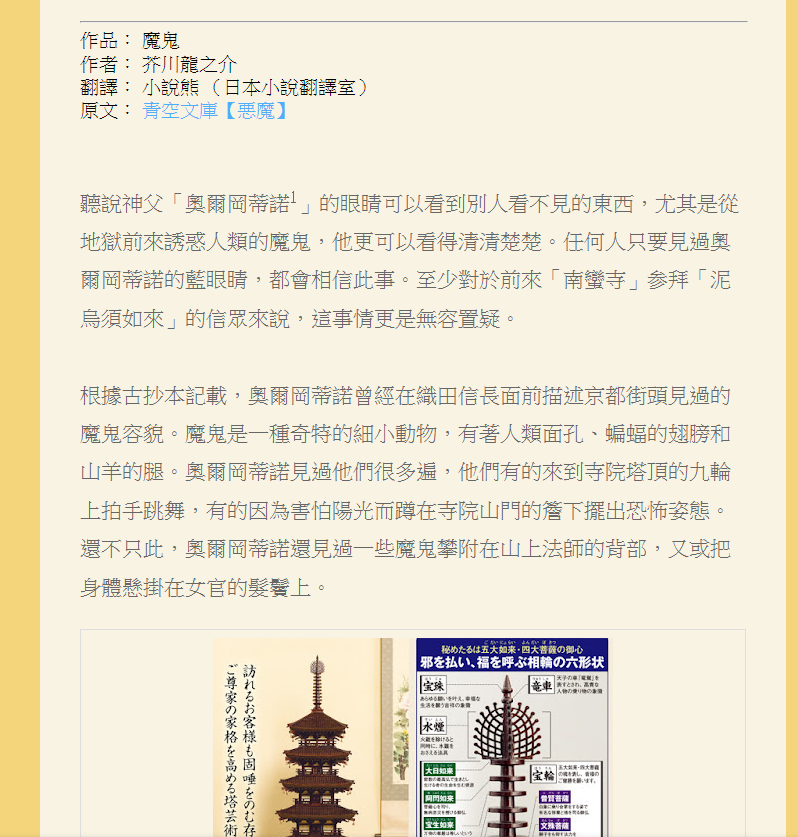
The length of <Part 2> is much longer than the previous one...Thank you very much for reading this 🙏🏻 Hard work!
We are very fortunate that we can live in an era of developed Internet. Through the rich online resources and the selfless sharing of our seniors, we can save the cost of tutoring and prepare for the test by self-study.
Finally, I would like to share a website that is quite useful although it is not described in detail above. I hope it can help everyone!
Replenish
📝Grammar: Super detailed grammar explanation for Sonic Language Learning (Japanese) ! There are also various situational dialogues.
💬 Swish: OJAD can convert text into spoken version to learn correct accent and rhythm
📙Reading, 👂🏻Listening: ANNnewsCH news with transcripts,JLPT official archaeological questions
If you have any questions, please leave a message below~
Please feel free to press 👏🏻 for me, your support is the driving force for me to continue creating!
Also welcome to follow my IG and share with you what I'm watching, listening to and learning this week!
See you in our next article!
Like my work? Don't forget to support and clap, let me know that you are with me on the road of creation. Keep this enthusiasm together!



- Author
- More